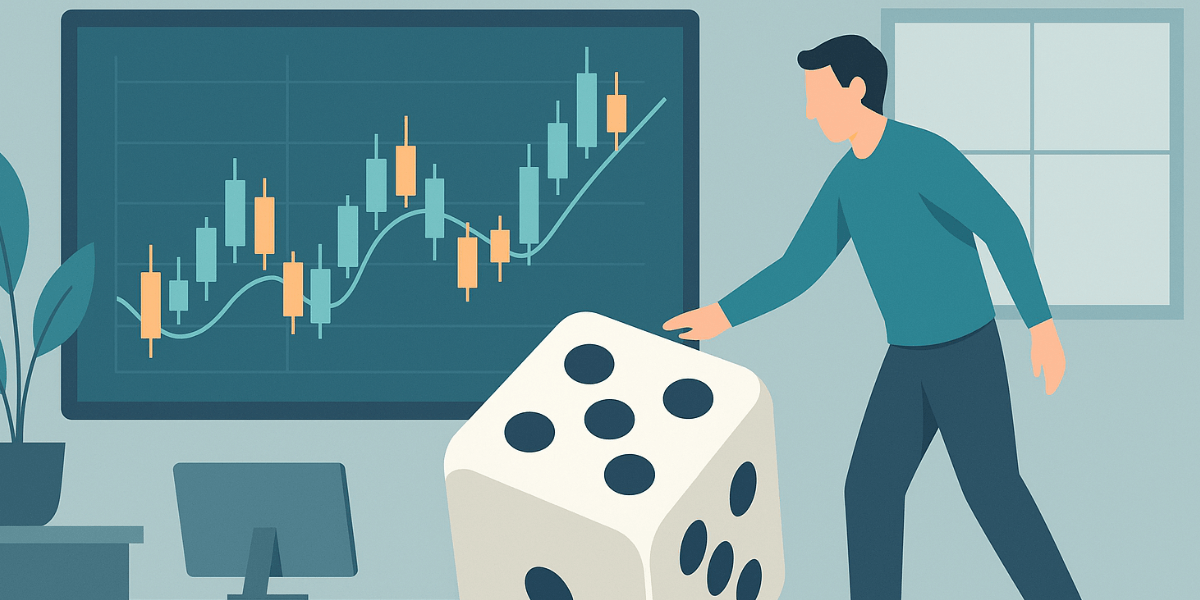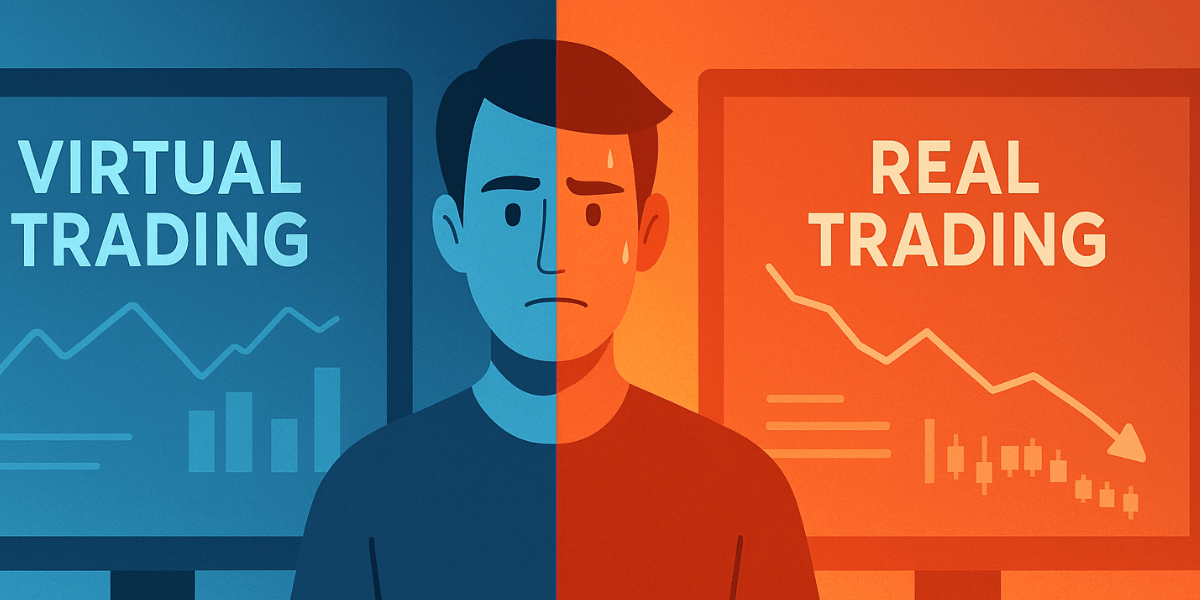Forex scalping is a short-term trading tactic focusing on taking advantage of small price movements in the foreign exchange market.
Scalping’s primary goal is to capture minimal gains, often just a few pips and multiple times per day. In contrast to other trading strategies, such as swing trading – where traders aim for larger profits, forex scalping looks to compound small gains through frequent trading.
While scalping involves quick trades with small profit margins, its success relies on precise execution and strict risk management. Traders using this strategy rely heavily on technical analysis, tight stop-loss orders, and fast decision-making to capitalize on the smallest market movements.
However, the rapid pace and high volume also demand strong concentration, discipline, and the ability to manage emotions effectively.
Understanding Forex Scalping Strategies
Successful scalping relies on various strategies that help traders identify short-term opportunities in the market.
Here are some common methods used by forex scalpers:
- Technical Analysis: Scalpers rely heavily on technical indicators and charting tools to spot price patterns and entry/exit points. Commonly used indicators include moving averages (MAs), the Relative Strength Index (RSI), and the Moving Average Convergence Divergence (MACD). Traders look at short-term price fluctuations through tick charts or minute-by-minute charts, allowing traders to time their trades precisely.
- Price Action Trading: Price action trading involves analyzing historical price movements and patterns, such as candlestick formations, to predict future price movements. Scalpers using this strategy focus on real-time data, identifying support and resistance levels, trendlines, and breakout patterns to make trading decisions.
- News Trading: Scalpers often capitalize on market volatility triggered by economic news releases or major events, such as central bank announcements or geopolitical developments. These events can cause sharp price movements in a short period, creating opportunities for quick profits. However, this strategy requires fast decision-making and precise execution.
Key Characteristics of Forex Scalping
The following four characteristics are typical for forex scalping.
- Small Profits, High Frequency: Scalpers aim to accumulate small gains from numerous trades rather than holding positions for larger profits.
- Tight Stop Loss Orders: To minimize losses, scalpers use tight stop-loss orders triggered quickly if the market moves against them.
- Fast Execution: The speed of entering and exiting trades is crucial for success, requiring a trading platform with low latency and fast order execution.
- Low Transaction Costs: Given the high number of trades, scalping requires low spreads and commission rates to prevent transaction costs from eating into profits.
Advantages and Disadvantages of Forex Scalping
Like every other trading tactic, forex scalping has its pros and cons.
Advantages of Forex Scalping
- High Frequency of Trades: Forex scalpers execute numerous trades within a trading session, providing many opportunities to capitalize on small price movements.
- Quick Profit Realization: Scalpers can achieve profits quickly, reducing the need to hold positions for long periods and face market unpredictability.
- Minimal Overnight Risk: Since positions are closed within a short timeframe, scalpers avoid the risks associated with overnight positions, such as significant price gaps due to news or events.
- Potential for Leverage: Scalpers often use high leverage to amplify their returns, allowing small price movements to result in meaningful profits.
Disadvantages of Forex Scalping
- High Transaction Costs: The frequent opening and closing of positions result in increased transaction costs, such as spreads and commissions, which can erode profits.
- Constant Monitoring Required: Scalping demands full attention to the market, requiring traders to monitor their positions continuously, which can be mentally exhausting.
- Emotional Strain: Scalping's fast-paced nature can cause emotional stress, leading to impulsive decision-making or errors in judgment.
- Small Profit Margins: The small profits from each trade require traders to maintain a high win rate and consistent discipline to be profitable in the long run.
Scalping Tools and Technologies
The choice of a trading platform is essential for successful scalping. Popular platforms like MetaTrader 4 (MT4), MetaTrader 5 (MT5), and cTrader offer advanced charting tools, fast order execution, and customization options for technical analysis. These platforms are well-suited for the rapid pace of scalping, providing traders with the tools they need to react quickly to market changes.
Furthermore, scalpers rely on various technical indicators to inform their trading decisions. Moving averages help identify trends, while the RSI and MACD provide insights into overbought or oversold conditions, helping traders determine entry and exit points.
Finally, many scalpers use automated trading systems or algorithms to enhance efficiency. Algorithms can execute trades faster than human traders, enabling traders to capitalize on small price movements and reduce the risk of emotional decision-making. Algorithmic trading also allows traders to test their strategies on historical data, ensuring consistency and effectiveness.
Using Moving Average Crossovers and Stochastic Signals in Scalping
Traders often combine technical indicators like moving average crossovers and stochastic oscillators to fine-tune their entry and exit points.
Here's how it works in practice:
-
Identifying a Setup: Scalpers begin by monitoring a shorter timeframe chart (such as the one-minute or five-minute) for signs of a potential trend. When the faster-moving average—say, the 50-period EMA—crosses above the slower 100-period EMA, it suggests bullish momentum is building.
-
Confirming with Stochastic Signals: To avoid false starts, traders seek additional confirmation from the stochastic oscillator. An oversold stochastic reading (typically below 20) signals that the currency pair might be primed for a reversal upwards.
-
Executing the Trade: Scalpers can enter a long position with the moving average crossover and the supportive stochastic reading in alignment. A stop-loss is usually placed around 10 pips from the entry point to manage risk.
-
Setting Profit Targets: Scalpers aim to capture quick gains, targeting profits two to three times the amount risked. Most trades of this nature are closed out within minutes, sometimes even less, once the target is achieved or the price action stalls.
Combining these indicators allows scalpers to capitalize on tiny fluctuations while maintaining a disciplined approach to risk and trade timing.
The Role of Multiple-Timeframe Analysis in Scalping
Scalper success relies on finding a good short-term edge; multiple-timeframe analysis helps boost that edge. By examining the price over multiple intervals—for example, using a five-minute chart in conjunction with a one-hour chart—it is possible to better understand the broader market trend and find better entry and exit trading points.
Through a multi-timeframe approach, you can ensure that scalping trades remain in the overall market direction, reducing the risk of being stopped in reverse. For instance, spotting a strong upward trend on higher timeframes while watching for pullbacks or breakouts on a one-minute chart can help you time your scalps more effectively.
Ultimately, incorporating multiple-timeframe analysis into your strategy helps ensure your trades are precise and in sync with the prevailing market momentum.
Calculating Potential Profits and Losses in Forex Scalping
Assessing profit and loss potential is critical to any scalper’s game plan. Here’s how traders typically approach the numbers:
-
Pip Value and Trade Volume: In forex, a “pip” is a standard unit measuring price movement. Scalpers often target small gains, such as five to ten pips per trade. For instance, if each pip is worth $10 (depending on position size and currency pair), a five-pip win yields $50 in profit. Multiply this by the number of trades executed in a session—say, ten trades—and your gross profit could reach $500, assuming all are winners.
-
Factoring in Losses: Of course, not every trade will be successful. It’s essential to subtract any losses from your profitable trades to determine overall profitability for the day. Stringent risk controls help mitigate the impact of inevitable losing trades.
-
Risk Management Approach: Traders often follow rules like never risking more than 1% of their total account balance on any single trade—a practice known as the 1% rule. For example, with a $20,000 account, a trader would risk no more than $200 per trade.
-
Risk-Reward Ratios: Many scalpers set a risk-reward ratio, such as aiming to make twice as much as they risk (1:2). With the earlier example, risking $200 would set a profit target of $400 for a winning trade, while limiting the potential loss to $200 if the market moves unfavorably.
By carefully calculating position size and pip value and incorporating strict stop-loss and take-profit levels, scalpers can manage their exposure and set realistic profit expectations, even in the fast-paced world of short-term trading.
Understanding the 1% Rule in Forex Scalping
A cornerstone of sound risk management for scalpers is the “1% rule.” This principle dictates that you never risk more than 1% of your total account balance on a single trade. For example, with a $20,000 trading account, your maximum loss per trade should be capped at $200. By following this guideline, even a string of losing trades won’t significantly damage your overall capital.
This rule works hand-in-hand with optimal risk-reward ratios—commonly set at 1:2. For every $1 risked, you're targeting $2 in potential profit. On a $20,000 account, risking 1% on each trade could translate to aiming for $400 in profit when things go your way, while ensuring any loss remains limited to $200. Keeping your exposure small per position allows you to stay in the game longer and make rational decisions, which is especially important in the rapid-fire world of scalping.
Focusing on liquid currency pairs (like EUR/USD) is also critical for scalpers looking to apply the 1% rule effectively. Liquid markets help ensure you can enter and exit trades near your intended price, reducing the risk of slippage and maintaining control over your losses. Combined, disciplined application of the 1% rule and careful pair selection create a foundation for longevity and consistency in scalping.
Scalping Forex From Singapore
Singaporean traders start their day in the Asian session, which runs from the Sydney market open until the Tokyo market closes. This session is characterized as more range-bound, with lower liquidity and smaller overall moves.
Thus, Singapore-based traders are more likely to use mean-reversion scalping techniques and watch out for higher spreads. However, those who trade through evenings when London and New York markets overlap will find higher liquidity and tighter spreads and can probably find opportunities with better risk-to-reward ratios. Read more about the best time to trade forex from Singapore and the best trading styles for Singaporean traders.
Psychological Aspects of Scalping
Scalping demands mental discipline and emotional control due to its high-frequency and fast-paced nature. Several psychological factors play a role in the success of a scalper:
- Emotional Discipline: Scalpers must maintain emotional control and avoid impulsive trading decisions. Fear and greed can lead to significant mistakes, such as letting losses run or prematurely closing winning trades. A disciplined approach helps traders focus on their strategy and avoid reacting to market noise.
- Risk Tolerance: Scalping's frequency of trades can lead to frequent small losses, which may add up over time. Scalpers must be comfortable with this risk and highly tolerant, balancing the potential for quick profits against the possibility of multiple small losses.
- Patience and Focus: While scalping is fast-paced, it requires patience for the right opportunities to present themselves. Scalpers must remain focused and avoid distractions that could cause them to miss key trading signals or make rushed decisions.
Five Tips for Successful Forex Scalping
- Start Small: To minimize risk while learning the intricacies of scalping, start with a small trading account and low leverage.
- Backtest Strategies: Use historical data to test and refine scalping strategies, ensuring their effectiveness in various market conditions. A typical rule of thumb for backtesting is to double the maximum drawdown and half the expected profit.
- Learn Continuously: Stay updated on market trends, news events, and trading techniques to adapt your strategies as market conditions change.
- Risk Management: Implement strict risk management rules, such as setting stop-loss orders and limiting the percentage of capital at risk per trade.
- Seek Professional Guidance: Consider consulting a trading mentor or coach to gain insights and improve your scalping skills.
Frequently Asked Questions
Is scalping harder than swing trading?
Scalping often requires a fast reaction and a higher degree of analytical capabilities. It also requires a higher resistance to stress, as fluctuations between wins and losses can drive extreme emotions like fear and greed.
What is the best time for scalping?
The best time for scalping is during periods of high market liquidity. This approach minimizes scalping costs due to tighter spreads and helps traders find opportunities with higher volatility.
Note: Any opinions expressed in this article are not to be considered investment advice and are solely those of the authors. Singapore Forex Club is not responsible for any financial decisions based on this article's contents. Readers may use this data for information and educational purposes only.







